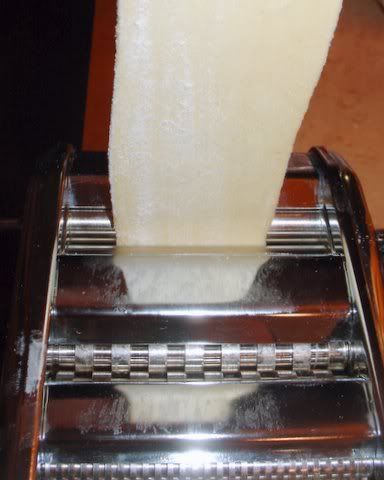
Ingredients:

2C semolina flour
1 extra large egg
1/2C water
1T extra virgin olive oil
Directions:
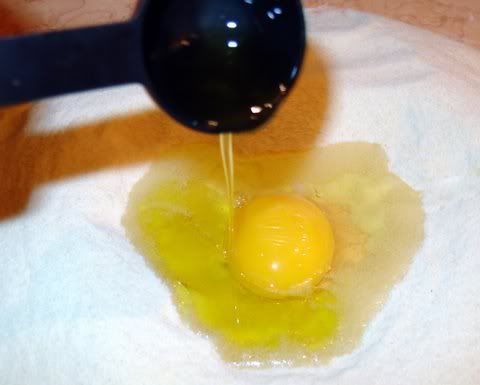

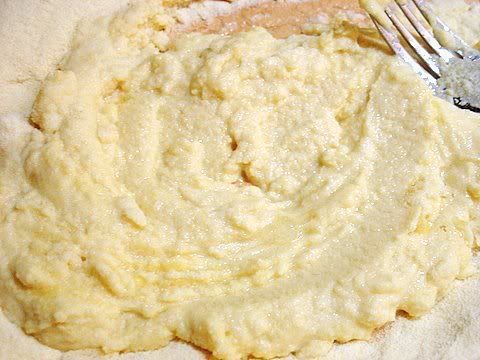

After pouring out the flour on your work surface, scoop out a "well" in the center of the flour and add the egg, then the olive oil, then mix with a little of the surrounding flour. the object is to slowly bring the dry flour to the wet ingredients in the center. As you pull in some of the flour, start adding the water, bring in more flour and work it into a thick paste like that in the lower left photo above. When you get to the sticky paste stage, there should still be some flour surrounding the paste. Scoop that leftover flour into the center and start kneading the pasta dough into one cohesive mass.
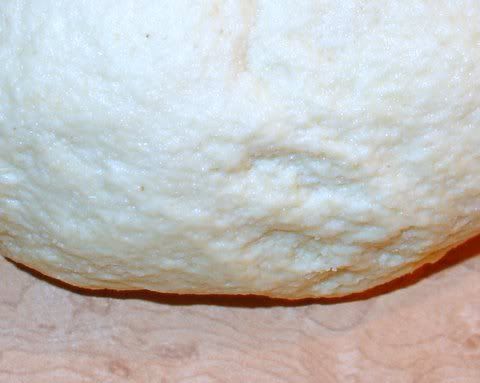

As you continue kneading the dough look at the texture carefully. The photo on the left still indicates a graininess in this dough, a natural characteristic when using semolina flour. As you continue to knead the dough, the moisture will break down the semolina and ultimately you'll end up with a smooth and very resilient pasta. Click on each photo (to enlarge them) to get a good look at the textures. You want the smoothest texture possible as seen in the photo on the right. When you have finally kneaded the dough enough, divide it into 4 parts and roll them into small loaves or logs, flattening one end to start the rolling of the pasta into the flat sheets you need to achieve. Allow them to rest for 20-30 minutes.
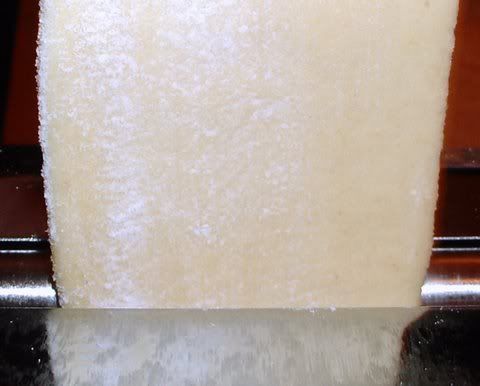
Set your pasta machine to the first and widest setting, then start rolling out the pasta and make 2 passes. The pasta will want to fold onto itself when it hits the plate under the rollers, so to keep it from sticking to itself, start pulling the thinner section under the rollers towards the front of the machine. If making this alone without an extra pair of hands, you need to stop the rolling to free up your hand so you can pull the pasta sheet forward. As soon as you are halfway through cranking the roller, the weight of the pasta will keep it from folding onto itself.


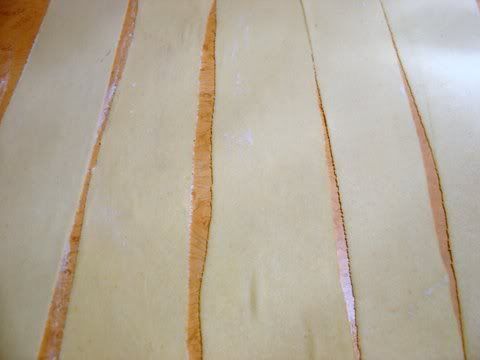
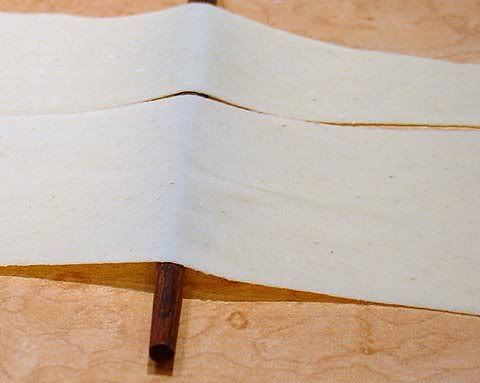
Place the pasta sheets onto parchment paper and sprinkle a small amount of flour on them (I use all purpose flour), then brush off the excess and roll through the pasta machine on the narrower 2nd setting. Some people fold the pasta in half at this point, if they hadn't done it during the first pass, but if you wish to do that, wait to put the dusting of flour on after folding and passing once through the rollers. If you want to fold the pasta in half, you need it to be sticky to adhere to itself. I personally skip this process. Continue rolling out the sheets of pasta, and check the consistency of the surface each time you do. If it's sticky, add the flour. The pasta in this recipe was rolled to the 3rd and 4th thickness on my pasta machine (truthfully, I lost track and didn't remember which had gone through the 4th pass). The lower left photo shows the pasta draped over a chopstick and looks very thin (probably passed through the 4th setting). It is a good idea to cut your sheets in half as they can become very unwieldy. During this process I cut the pasta sheets after the second setting.
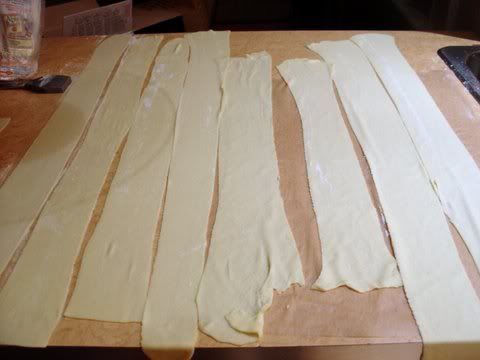
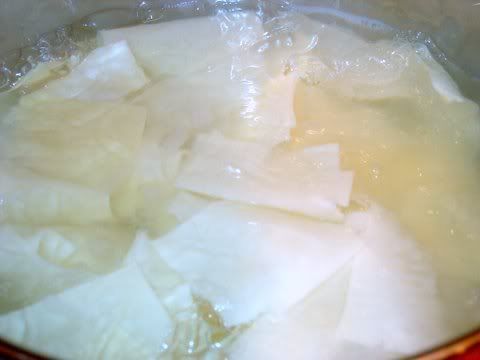
Now you need to think about what you want to do with the shape of the pasta. You can cut it into long strips for lasagne, or dust with flour or cornstarch, or even rice flour, then roll and cut into your desired width for linguine, tagliatelle, fettuccine, or pappardelle. Instead of fussing with it, I decided to hold the long sheets over boiling water and cut squares with a pair of scissors. It was a very efficient use of time. After a few minutes, the pasta is done.
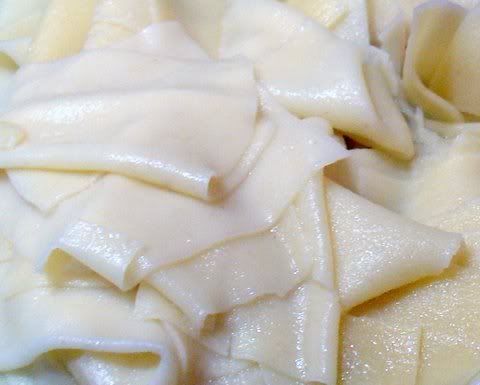





No comments:
Post a Comment